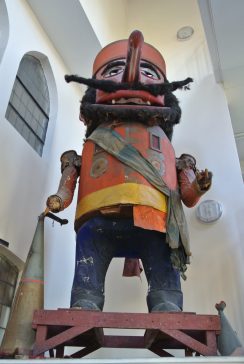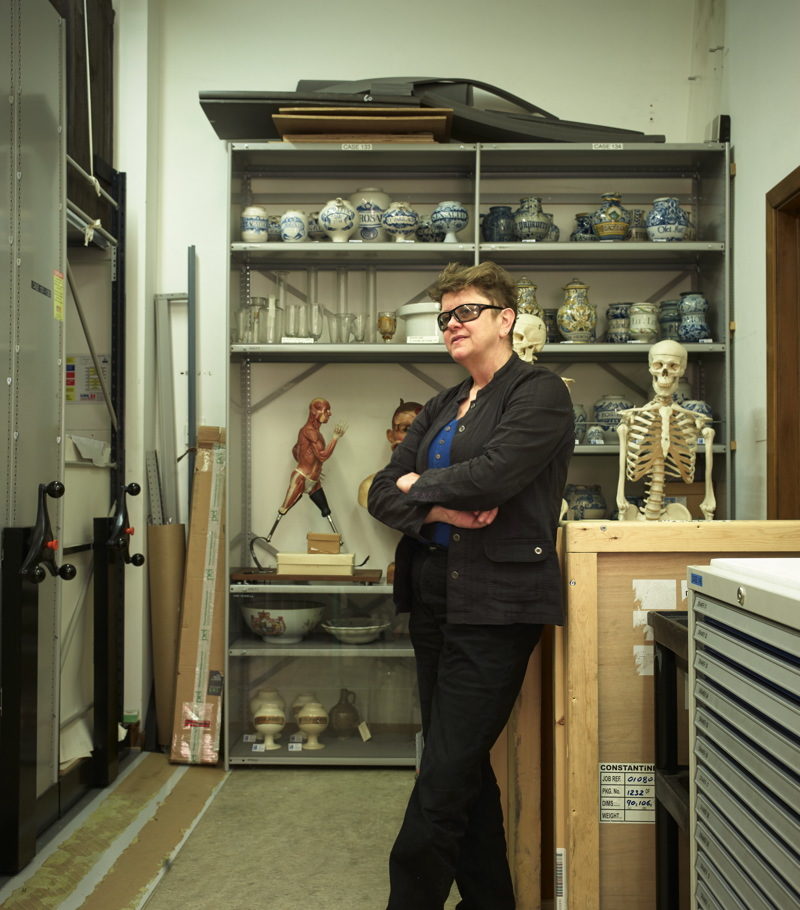Three weeks into rehearsal and I’ve spent most of my time pinned to a specimen jar in one of the zaniest, most challenging stories I’ve presented. Hold the Hearse is my provocative response to investigations into the public and hidden collections of partner museums in Exceptional and Extraordinary.
Following Mat Fraser’s award-winning commission Cabinet of Curiosities, which that toured UK museums in 2015, Exceptional & Extraordinary invited four artists – dance company Deaf Men Dancing led by choreographer Mark Smith, film-maker David Hevey, comedian Francesca Martinez, and me – I’m an artist and playwright – to explore behind the scenes of eight of the UK’s most renowned museums with medical collections – including the Thackray Medical Museum in Leeds. Initiated and led by the Research Centre for Museums and Galleries (RCMG) at the University of Leicester, Exceptional and Extraordinary is a collaborative project with experts in medical history, disability and museums.
I was 11 when I first visited a museum. I was disruptive in class and couldn’t sit still. So I was given a sketchpad and pencils, and packed off to Lady Lever Art Gallery over the road. I spent the afternoon mesmerized by a statue of Kuan Yin, the Goddess of Mercy and the embodiment of compassion. I was just entranced. Beneath the statue it simply said: “She who sits and waits.” So I did.
My work continues to draw upon lost voices in museum collections and archives clamouring to be heard. Crossings was a story about slavery that weaves three women’s voices across three time zones and continents. It began with a story I found on the walls of Liverpool’s International Slavery Museum and then rolled with further snippets from Te PaPa and Petone Settlers Museums in New Zealand.
I suspect Hold the Hearse might ruffle some feathers. What I have to say is not easy to hear. There are huge dilemmas at the heart of museum culture that need addressing if disabled and deaf people are to become central voices.

As a survivor of the psychiatric system I know something about being silenced. This shapes the work I make and the work I’m drawn to. Of all the objects in the collections, I fell in love with Pullen’s Giant. Pullen was described as an idiot savant – a label I detest. He speaks to me as a quiet man with extraordinary ideas. His Giant is an imposing and militaristic embodiment of power that he could climb inside and manipulate from within. A little like me with this show.
In making the show, I chose two stories from the archives at Bethlem and Langdon Down Museums to develop the two characters in the piece. Mad Mary (lunatic, 40, cause of insanity: grief at loss of a child) and Walter Riddle (feeble minded, 17, mental defect) represent the two groups of people I feel are deeply stigmatised in society today because of the ongoing impact of previous biomedical research. Ideas that emerged in the anatomy labs and operating theatres in the 1800s have had a significant and negative impact on the perception of deaf and disabled people to this very day.
At the outset, I asked everybody showing me round their collections two questions – “What would you crawl on your hands and knees through fire to save?” and perhaps more loaded: “What inside your collection most disturbs you, or you’re most afraid of disturbing the public with?” I was often moved by people’s responses, and their intensely personal connections with the archived materials they protect. I was also baffled in equal measure by the things that people found disturbing. Most of the responses to my questions are woven into this show.
We arrive at any collection of artefacts with our own subjective political filters. If I were curating an exhibition from the collections I’ve witnessed, I’d present the same contents driven from the perspective of exclusion. I’d want the awkward questions out in the open. Whose stories are left out? Why are the majority of human skeletons used in teaching museums, small adult females allegedly from the Indian subcontinent? Why are the first images created of patients undergoing trepanning young, black and male? Does life come cheap in some areas of the world? Why do we value some lives more than others?
Presenting disabled and deaf people as spectacle for derision, ridicule or pity is still prevalent. Objectifying medical presentations where unruly minds and bodies were paraded before physicians and surgeons in their teaching theatres were no better than freak shows. All helped to educate the public about their place in the hierarchy of classes, races, civilisations, and nations that was so crucial to the 19th-century world view.
In 2016 we are fast returning to these toxic ideas with Disability and Capability Assessment Centres managed by Atos or Capita to weed out the useless eaters and demonise disabled people.
You can catch Julie McNamara’s Hold the Hearse at Thackray Medical Museum, Leeds at 7.30pm on 21 June. Tickets: £8/concessions £5 (includes 12 month museum pass). Tickets and enquiries: www.thackraymedicalmuseum.co.uk/what-s-on/ or 0113 244 4343



Leave a reply
Your email address will not be published.